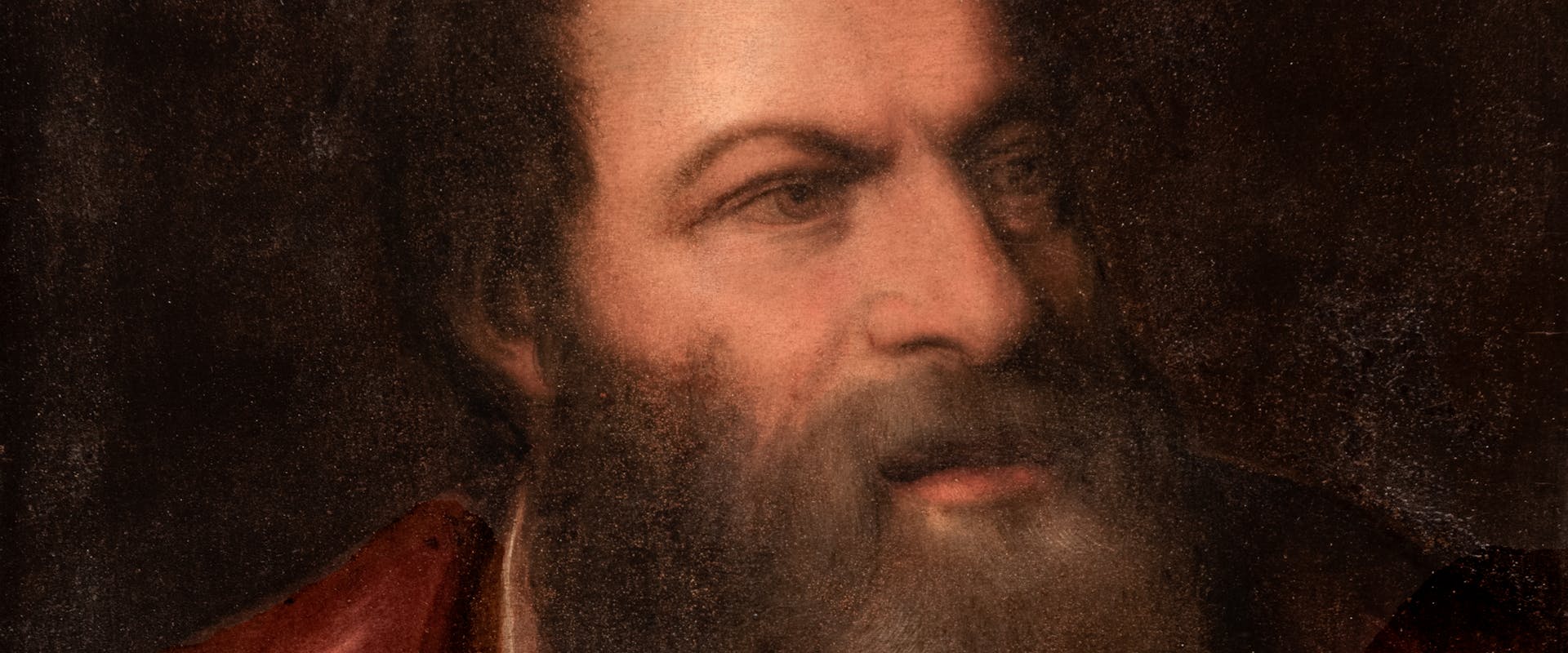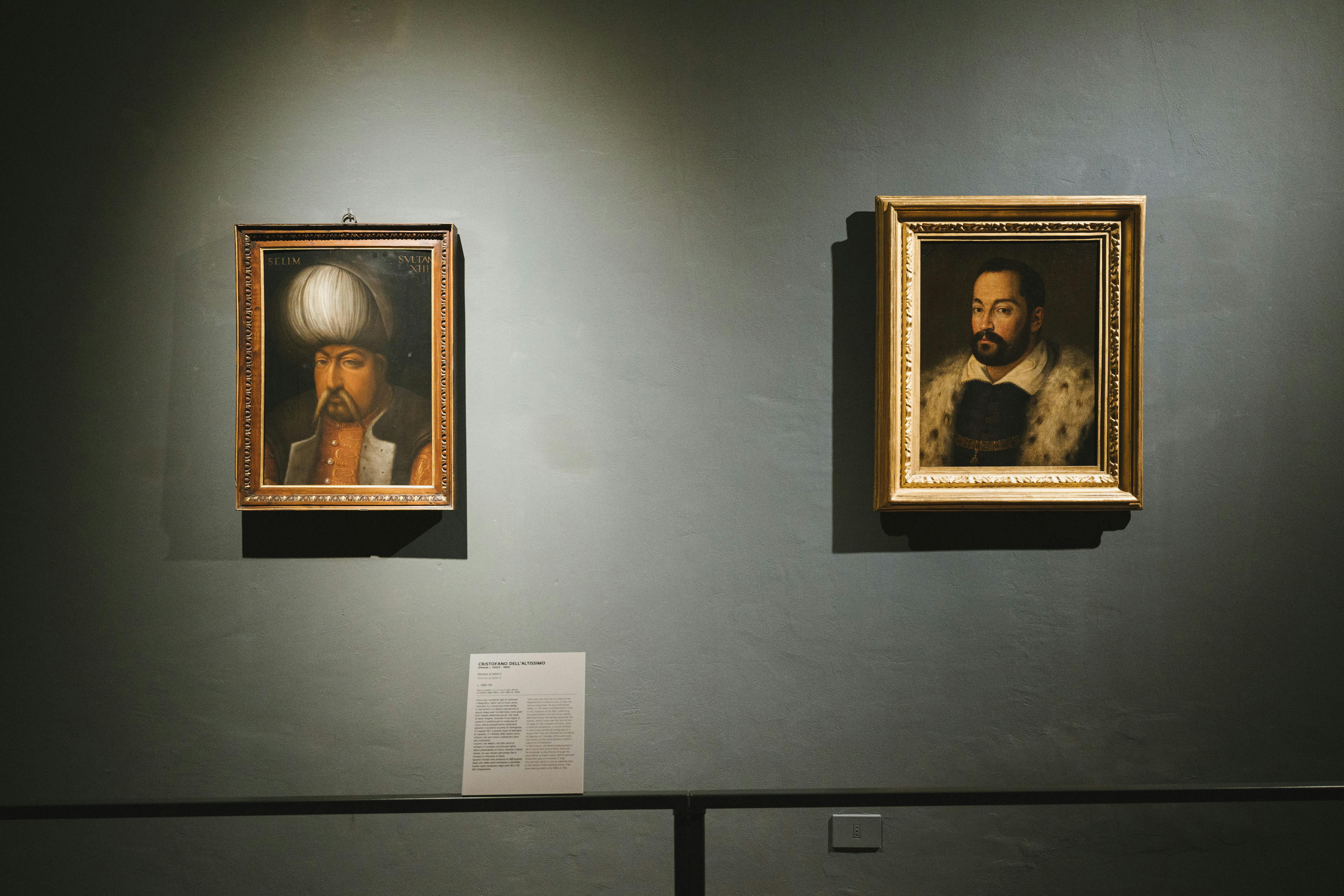Embattled thinkers. Fame and oblivion of two men of letters, from the Battle of Anghiari to the siege of Famagusta
The Museo della Battaglia e di Anghiari is to host a new exhibition in the Lands of the Uffizi
Until 17 September, the town will be showcasing manuscripts and printed works from leading cultural institutions and paintings from the Uffizi, taking visitors on a journey to the courts of the Medici and of Venice where Magi and Nomi lived and worked. The exhibition, entitled “Intellectuals at war, fame and oblivion of two men of letters, from the Battle of Anghiari to the siege of Famagusta” is curated by museum director Gabriele Mazzi who, in devising the exhibition, also availed himself of recent research by Pietro Giabbanelli shedding new light on the life and work of Girolamo Magi.
A crucial event in the life of Magi – who was born in Anghiari, presumably in 1523 – was his meeting with the poet Pietro Aretino who helped him with the publication of his “Le Guerre di Fiandra”, and commissions from Duke Cosimo I de’ Medici which were eventually to lead to his employment by the Most Serene Republic of Venice. Of equal importance was his study of Albrecht Dürer‘s treatise on military architecture, the reference work for his own “Della Fortificazione delle Città” written with Giacomo Fusto, known as Castriotto, and published in Venice in 1564. Magi continued to work primarily in Venice in his mature years. He was dubbed a “Knight of San Marco” and was despatched by the city fathers to oversee the fortification of Cyprus during the Ottoman war, which ended with the fall of Famagusta to the Turks. After Venice was defeated, Magi was taken to Constantinople as a prisoner and there executed. While in prison he found the time to write two literary pieces, one of which was entitled “De Tintinnabulis”. Published posthumously, it is one of the most significant treatises of all time on the sound of bells.
Federigo Nomi, though descending from an old-established family of Borgo Sansepolcro, was born in Anghiari in 1633. The troubled cultural atmosphere in a declining Tuscany split between Galileo’s followers and the Aristotelians saw him go from Chancellor of Pisa’s Sapienza university to exile in Monterchi, where he wrote the “Buda Liberata” published in 1703, and the “Al Catorcio di Anghiari” which remained in the manuscript stage until it was finally published in the mid-19th century. The historical and cultural humus triggered by the Battle of Anghiari on 29 June 1440 which was later depicted by Leonardo da Vinci provided both the spark and the backdrop for the “Catorcio”. Nomi’s friendship with Antonio Magliabechi and, more importantly, with Francesco Redi, a member of the Medici court’s inner circle, facilitated his career as a thinker enormously and he eventually became a protégé of Grand Duke Cosimo III de’ Medici.
The Gallerie degli Uffizi’s loans to the exhibition include Nicolas Tournier’s Fame and Obscurity, Gerard Ter Borch’s The Woman and the Soldier and portraits of figures who appear in the exhibition such as Francesco Redi, Selim II and Pietro Aretino. The exhibits also include printed editions of some of Magi’s most significant works from the Biblioteca Città di Arezzo, a Portrait of Federigo Nomi from the Museo delle Arti e Tradizioni Popolari dell’Alta Valle del Tevere di Palazzo Taglieschi (Direzione Regionale Musei della Toscana) and a rare edition of Paolo Giovio’s Elogia from the library of the Nuova Fondazione Pedretti, while visitors will be able to draw parallels between Dürer’s work and the studies of Girolamo Magi thanks to the cooperation of the Biblioteca Comunale degli Intronati in Siena.
A number of models of machines invented by Girolamo Magi have also been specially made for the exhibition, allowing visitors to gain first-hand experience of the technological innovations for which he was responsible in the 16th century.
Magi and Nomi helped to shape the cultural panorama of their day. Despite their differences, they have shared a similar fate consisting of an unflagging literary output followed by obscurity. The exhibition sets out to provide food for thought, highlighting the vibrancy of the intellectual environment in the area in the 16th and 17th centuries and the extent to which it contributed to, and enriched, the development of European thinking.
Stanislao Pointeau. A Tuscan "macchiaiolo"of French descent. An exhibition dedicated to Prof. Carlo Del Bravo
Exhibitions
The Medici: Mugello Folk. Family portraits from the Gallerie degli Uffizi
From 19 May to 5 November, four works from the Uffizi Galleries bring back the Grand Dukes in the country and towns of the Mugello, the family’s legendary homeland.
Exhibitions
A bizarre and whimsical temperament. Giovanni da San Giovanni, a maverick painter at the Medici court
Giovanni da San Giovanni returns to his home town with an exhibition in the "Lands of the Uffizi" series
Exhibitions
The Ceramics of Montelupo and the Uffizi. A gallery of comparisons
"Lands of the Uffizi" comes to Montelupo for the first time
Exhibitions
Embattled thinkers. Fame and oblivion of two men of letters, from the Battle of Anghiari to the siege of Famagusta
The Museo della Battaglia e di Anghiari is to host a new exhibition in the Lands of the Uffizi
Exhibitions
The Fabulous '60s in the Maremma. The mark of Ico Parisi
The splendour of the fashionable clothes of the Museum of Fashion and Costume of Pitti Palace 'parades' in Grosseto to recreate the dynamism and effervescence of the society of Southern Tuscany in the post-War period.
Exhibitions
The paintings of Jacopo Vignali, from the Gallerie degli Uffizi to San Casciano
In memory of Carlo Del Bravo
Exhibitions
Masaccio and Fra Angelico. A dialogue on truth in painting
Masaccio returns to his birthplace, Castel San Giovanni, in a dialogue with Fra Angelico
Exhibitions
La predella degli Uffizi salvata al Castello di Montegufoni
The return to Montespertoli of the Gallerie degli Uffizi predella
Exhibitions
A Renaissance Masterpiece, from France to Bosco ai Frati: A Triptych by Nicolas Froment.
15th century painter Nicolas Froment’s masterpiece returns after almost 200 years to the convent that was its home for centuries
Exhibitions
Nel segno della vita. Donne e Madonne al tempo dell' attesa
An exhibition devoted to the portrayal of the motherhood
Exhibitions
Masaccio and Renaissance masters compared to celebrate 600 years of the Triptych of San Giovenale
Masaccio’s San Giovenale Triptych displayed for the very first time alongside work by the great painters of his day
Exhibitions
Pietro Benvenuti in the Age of Canova. Paintings and drawings from public and private collections
The first “Lands of the Uffizi” exhibition to be held in Arezzo explores the work of painter Pietro Benvenuti in the age of Canova
Exhibitions
The Warrior Pope Giuliano Della Rovere and Anghiari’s Soldiers of Fortune
The link between the Warrior Pope Giuliano Della Rovere and Anghiari’s Soldiers of Fortune
Exhibitions
Giottesque Painters in the Valdelsa
Two versions of the Madonna and Child juxtaposed for visitors to discover Lippo di Benivieni and the followers of Giotto in the Valdelsa
Exhibitions
"The Final Seal". The Stigmata of St. Francis at La Verna from the collections of the Gallerie degli Uffizi
The Pinacoteca Comunale di Castiglion Fiorentino and the Gallerie degli Uffizi trade two masterpieces
Exhibitions
The Civilisation of Arms and the Courts of the Renaissance
An exhibition in Anghiari telling the story of the Renaissance courts and of the men who peopled them, amid war and culture.
Exhibitions
In the Name of Dante. The Casentino in the Divine Comedy
Dante returns to the castle of Poppi, where the Casentino inspired the Divine Comedy
Exhibitions
Dante and Andrea del Castagno Return to San Godenzo
The fresco of Dante painted by Andrea del Castagno in the place where the painter was born and where the poet's exile began
Exhibitions

